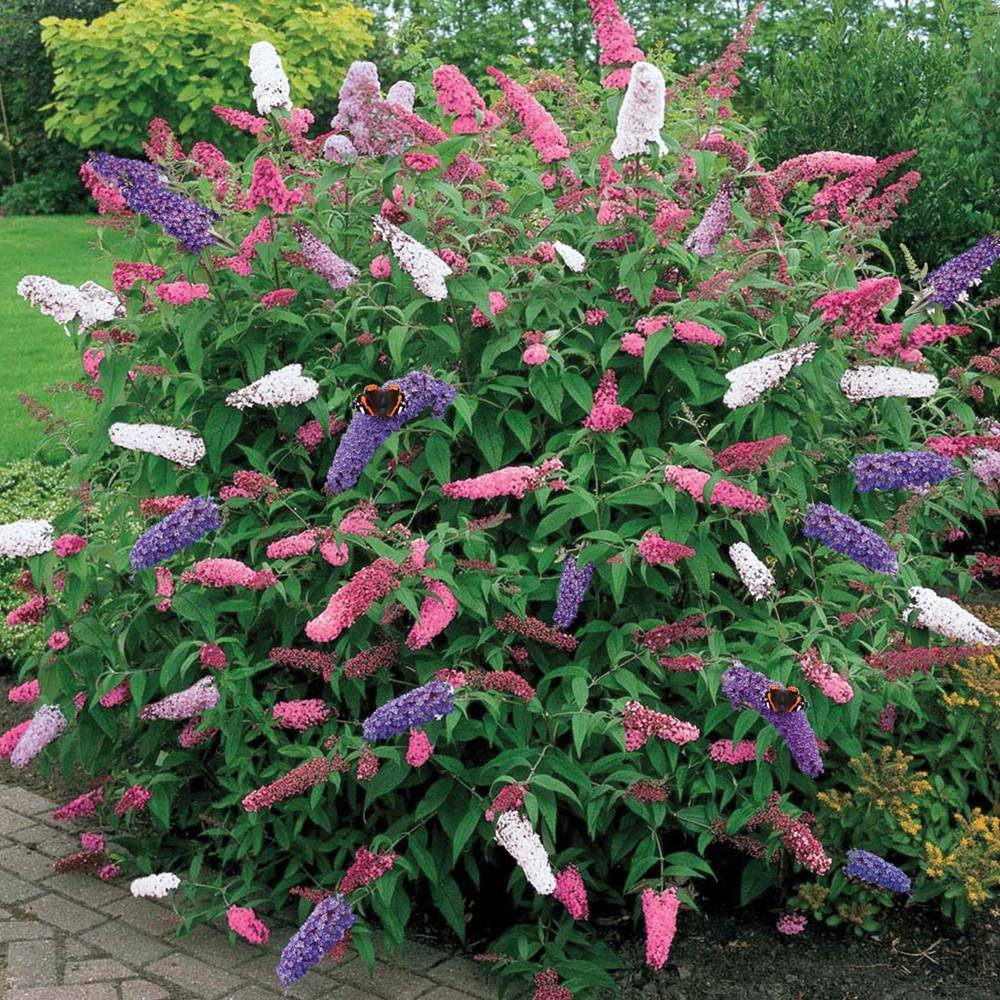
Unable to ship to: AE AK GU HI OR PR WA.Additional Information: In northern climates Buddleias behave like herbaceous perennials with the top growth dying back in winter.Winter Care: Mulch in colder climates, remove in early spring before growth starts.Pruning: Cut back all flowering stems close to the base (down to 12-15") in early spring.Growth Rate: Fast once established, which takes approximately 6-8 weeks.Soil Requirements: Well drained, humus enriched soil.


Since they bloom on new wood, even if there is no die-back, cut them back to the ground every spring.In the northern limit of their range, they behave as herbaceous perennials, dying back to the root in cold winters.In warmer climates, the bushes will grow into trees and develop rugged trunks that peel peeling is normal. The bush should bloom abundantly even in its first year.Buddleias are very late to break dormancy, so don’t be in a hurry to assess winter damage.In cold, Northern climates, spread mulch up to 6 inches deep around the trunk to nurture it through the winter.Each spring, apply a thin layer of compost and mulch to retain moisture and control weeds.Deadheading of this invasive is now required in many states. In addition, it is important to deadhead the flowers just as they start to wither so that this invasive plant doesn’t spread volunteer seeds.Remove spent flower spikes to encourage new shoots and flower buds.Avoid fertilizing butterfly bush too much fertility promotes leaf growth over flower production.In the summer, water if rainfall is less than 1 inch per week.


If you do have a butterfly bush, be sure to add native host plants such as milkweed, aster, and dill if you want the butterflies to stay. Caterpillars do not feed on butterfly bushes rather, it only provides nectar to adult butterflies. In other words, the butterfly bush is known to crowd out native plants that are essential to wildlife, including butterflies and birds. In warm climates, it can become a noxious weed and spread aggressively, while in cooler climates, it mostly stays contained within a garden’s cultivated soil if gardeners deadhead the flowers.ĭespite the “butterfly” name, keep in mind that this shrub is not a “host plant” for butterflies in that it does not support butterfly reproduction and lifecycle. Please note that the butterfly bush, originally imported from China, has been classified as an invasive species in most U.S. The shrub is low-maintenance, only requiring dead-heading and annual pruning in later winter to encourage flowers and a compact shape. Its flowers come in many colors, though butterflies seem to prefer the lavender-pink (mauve) of the species to the white and dark purple cultivars.Īlso called “summer lilacs,” butterfly bushes are hardy to Zone 5 and remain evergreen from Zone 8 south.


 0 kommentar(er)
0 kommentar(er)
